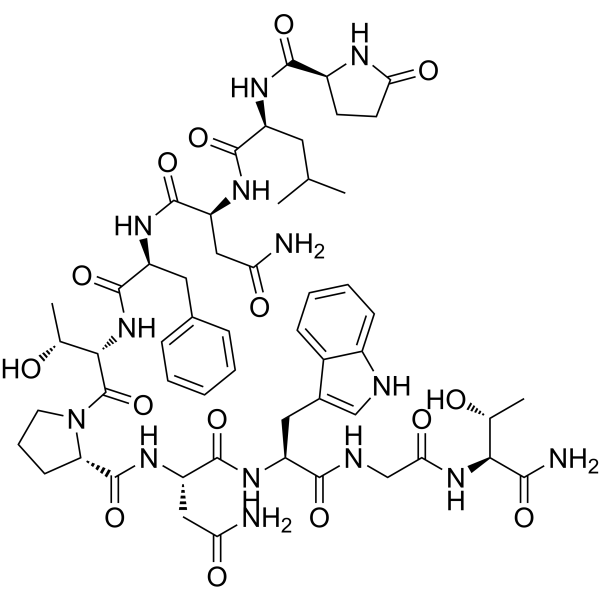61627-67-6
| Name | Adipokinetic hormone I (Locusta migratoria) |
|---|
| Description | Adipokinetic hormone I (Locusta migratoria) (Lom-AKH-I) is a insect adipokinetic hormone (AKH), enhances fat body cAMP levels in vitro. Insect adipokinetic hormones (AKHs) controls flight-directed mobilization of carbohydrate and lipid from fat body stores, which depends on AKH receptor(s) coupling to cAMP formation and glycogen phosphorylase activation via the stimulatory guanine nucleotide-binding protein (Gs)[1][3]. |
|---|---|
| Related Catalog | |
| In Vitro | Adipokinetic hormone I (Locusta migratoria) (radiolabeled; 1 pmol in 10 μL of 10% methanol; 30 min on ice, and repeated for 2 h at 30 ℃) shows no association with one of the larger protein components, indicating a lack of separate transporting or carrier protein in the hemolymph[1]. Adipokinetic hormones (AKHs) are known to be involved in insect immunity and shows the mechanism of metabolic stimulation, leading a significant increase in carbon dioxide production, and efficacy increase of toxins produced by I. fumosorosea in the cockroach's body[2]. Adipokinetic hormone II is more effective than hormone I in bringing about an accumulation of cAMP in the fat body[4]. |
| In Vivo | Adipokinetic hormone I (Locusta migratoria) (1 pmol in 10 μL of 10% methanol; injection) plays its own biol. role in the overall syndrome of insect flight, with different half-lives of 51 min and 35 min during rest and flight, respectively[1]. |
| Molecular Formula | C54H74N14O15 |
|---|---|
| Molecular Weight | 1159.25 |
